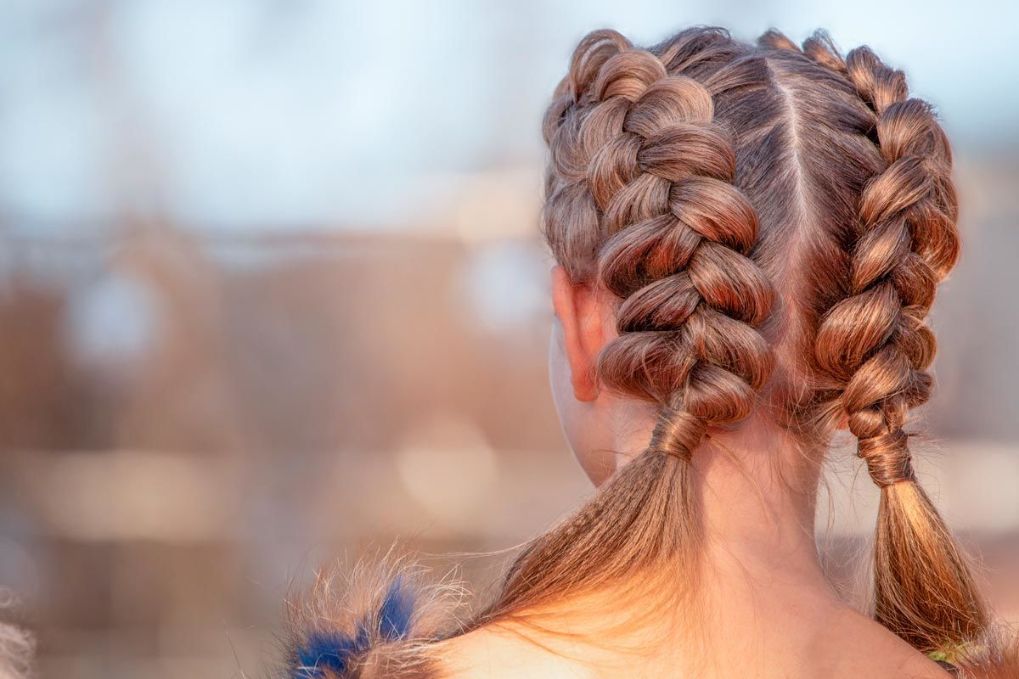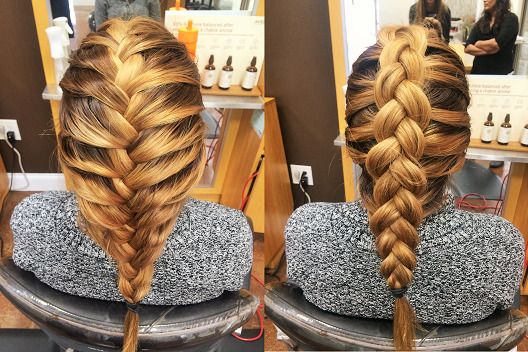Dutch Braid Vs French Braid: Difference to Know

Everything you need to know about the variations between Dutch and French braids is explained in this guide.
One of the most adaptable and simple ways to style your hair is with braids. You can rock an elaborate, one-night-only look with box braids or wear them as a protective style for weeks. There are countless options, and almost everyone can rock a gorgeous braided hairstyle.
French braids and Dutch braids are two fashionable hairstyles that are frequently confused. There is a slight difference even though the appearance and technique are similar. You Might Also Like: Why Do Girls Have Long Hair? 7 Reasons
How to Dutch Braid?
Even though it appears more difficult, anyone who can do a French braid can also do a Dutch braid. Like a French braid, start a Dutch braid by dividing your hair into three sections close to the crown of your head.
Then, follow this pattern as seen in the video tutorial above: Left strand under the middle strand, right strand under the middle strand, and repeat, while adding more strands of hair from each side as you go. Finish the braid like a French braid, then carry on until you reach the nape of the neck.
Finish by tying off the ends of your hair. The finished product will resemble a substantial 3-D braid floating on top of your hair.
In case you were wondering, the Dutch braid is frequently mistaken for both the French braid and cornrows. However, the method of weaving is the primary distinction between Dutch braids and cornrows.
Dutch braids involve crossing your hair under while holding it at an angle to add height.
However, the braiding is done much more tightly with cornrows, which also pass under. Due to the fact that each section of hair is braided all the way to the middle of each braid, the final appearance is different and a little flatter against the scalp. Here is a YouTube video to help you understand how to Dutch braids:
How to French Braid?
I love a good Frenchie. Despite its name, there is much disagreement regarding the French braid’s ancestry. Many times, the first people to employ these styling methods were Africans and Greeks.
Algeria’s Tassili n’Ajjer mountain range has the earliest evidence, where rock art from nearly 6,000 years ago shows women sporting this braid. The hairstyle was then seen in Greek art, particularly on the kouros statues
Therefore, how do you make a French braid? Unlike a typical braid, you start this one by dividing a section of hair into three smaller sections close to the crown of your head. Then follow this pattern: Left strand over the middle strand, right strand over the middle strand, repeat.
Be sure to add another piece of hair from each side of the braid before crossing the next strand over. At the nape of the neck, finish the braid as you would a standard three-strand braid. Continue in this manner until you get there.
Your entire head of hair should be included in the final product, which should be tight and smooth against it. Use the above instructional video as a guide to practice by following along.
When starting the French braid pattern over, try to maintain a constant hair addition amount for a neater appearance. On the other hand, a bumpy, unkempt French braid can also look really chic. Tie the end off with a cute ribbon or hair tie, and you’re done. Here is a YouTube video to help you understand how to French braids:
Tips for Styling Your Braids
Now that you understand how to distinguish between and make each braid, you can be more inventive. You might want to lay your edges or leave them as-is depending on the texture of your hair.
You can spruce up the look by adorning your braids with pearls, flowers, or jewelry. While one loose French braid can look effortless, some people enjoy wearing two braids.
Be sure to safeguard the hair after all your hard work. In order to preserve the hairdo, wrap your hair before lying on it and avoid rubbing your braids with hats or rough handling to reduce frizz.

Read More:
- What Kind Of Haircut Should I Get?
- Does Cutting Hair Make It Grow Faster? How To Do It?
- How to Make Your Hair Look Shorter Without Cutting?
- Does Trimming Hair Make It Grow Faster?
- What Should I Do With My Hair?
Conclusion: Dutch Braid Vs. French Braid
Finally, both Dutch and French braids are fantastically fun ways to change up your hairstyle every day. Ponytails will seem like the beginning once you’ve added them to your skill set.
Whatever braid style you choose to try, keep in mind that practice makes perfect. Don’t be afraid to experiment with these two different looks on friends, an old doll, or even yourself.
